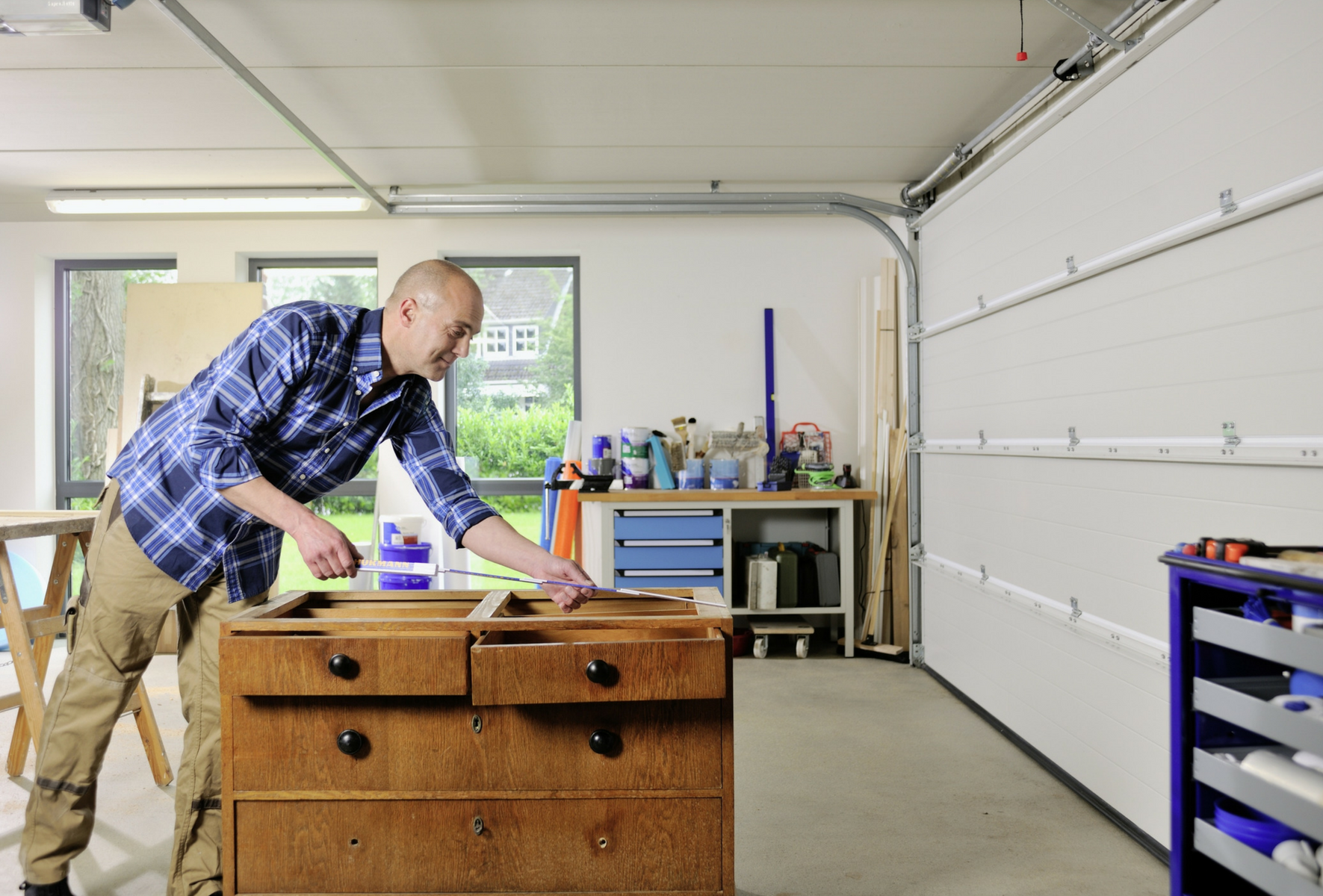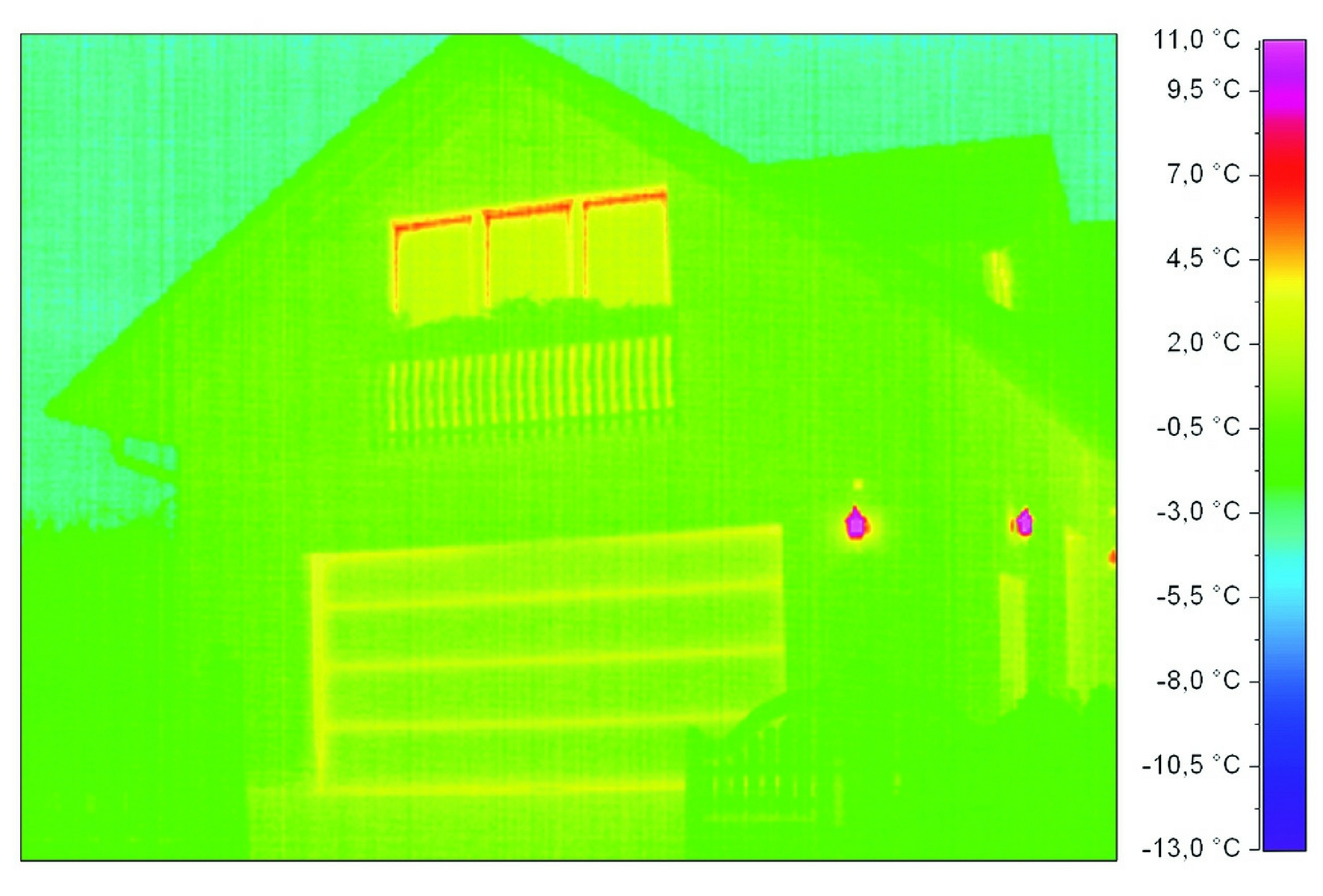




Insulated walls, sealed windows and insulated doors are important for energy efficient building or renovation of the house. Also, a well-insulated garage door can make sense if it is directly connected to the house, or the garage is used as a working or hobby room for example. In this Hörmann tip you get to know, when a good thermal insulation for garage doors is especially important and what you have to think of when purchasing.
Insulated garage doors save energy and money
At certain points of the house warm heating air escapes more easily from the inside to the outside, since the heat conduction is particularly high there. These areas are referred to as thermal bridges and are usually created by integrated into the facade components such as windows, doors or garage doors. In order to prevent valuable energy being lost through potential thermal bridges (colloquially referred to as a cold bridge), good insulation of the components is important. You should pay attention to these directly when buying!
Poorly insulated garage doors can be a problem especially if they are linked to the house. Warm air can get out of the house easily then, which increases energy costs over time. To avoid that it is recommended to use double-layered garage doors. This can help to decrease thermal loss and therefore costs for heating can be saved. This is also a big advantage if the garage is also used as hobby room, working room or party room.
The double-layered LPU 42 garage sectional door made by Hörmann, with the 42 mm thick boards offers good thermal insulation. Even better insulated is the energy saving garage door LPU 67 Thermo, that has 67 mm thick boards and a U-value of 0.31 W/ (m²K) and is therefore the right choice for energy efficient building and renovating. Especially for well insulated garage walls building owners should consider having a thermally insulated garage door and get the right advice. If not, you might have problems with mold growth at poorly insulated parts of the garage.

Figure: When the garage is not only space where you park your car, but is also used as workshop, it is recommended to use a thermally insulated garage door.
It is so easy to additionally improve the thermal insulation
If you want to improve the thermal insulation of your garage door additionally, it is recommended to use the frame-connection ThermoFrame made by Hörmann. A synthetic profile separates the garage door frame from the wall and therefore interrupts the thermal bridge at this situation. Thanks to this thermal barrier, the loss of thermal energy can be stopped and the thermal insulation can be improved by up to 15 percent. Apart from that additional sealing lips insulate the garage door at both sides and also on top even better.

Figure: The Hörmann ThermoFrame increases the insulation of the garage door additionally by about 15% and helps to save energy and thermal costs.
You should think about this in consideration of energy efficiency when buying a door
In order to make the right decision in consideration of energy efficiency when buying a garage door, we have made a summary of what you need to consider:
1. Double wall sectional doors decrease the energy loss
2. Thermally separated boards and double lip seals increase the thermal insulation.
3. The thermal bridge between wall and frame can be interrupted by an additional synthetic material profile (ThermoFrame) and the insulation can be improved by a further 15%.
4. Integrated wicket doors or side doors for garages can decrease thermal loss, as not the whole door has to be opened if you just want to get the bike or motorbike out of the garage.
Hörmann partners know the requirements in terms of thermal insulation and can assist you when buying a garage door, so as to ensure you can find a door that meets all your requirements. Here you can easily find a retailer near you.
京ICP备19020618号-1 ©2026 Hörmann After sales :400-6507-888








